Deforestation is an important global issue affecting many countries and billions of people. Canada—home to 10% of the world's forests—is also affected by deforestation despite being a world leader in sustainable forest management. Every year, thousands of hectares of forest are lost to industrial logging, natural disturbances, forest fires, and forest conversion, threatening the livelihood of local wildlife and significantly impacting the planet's health.
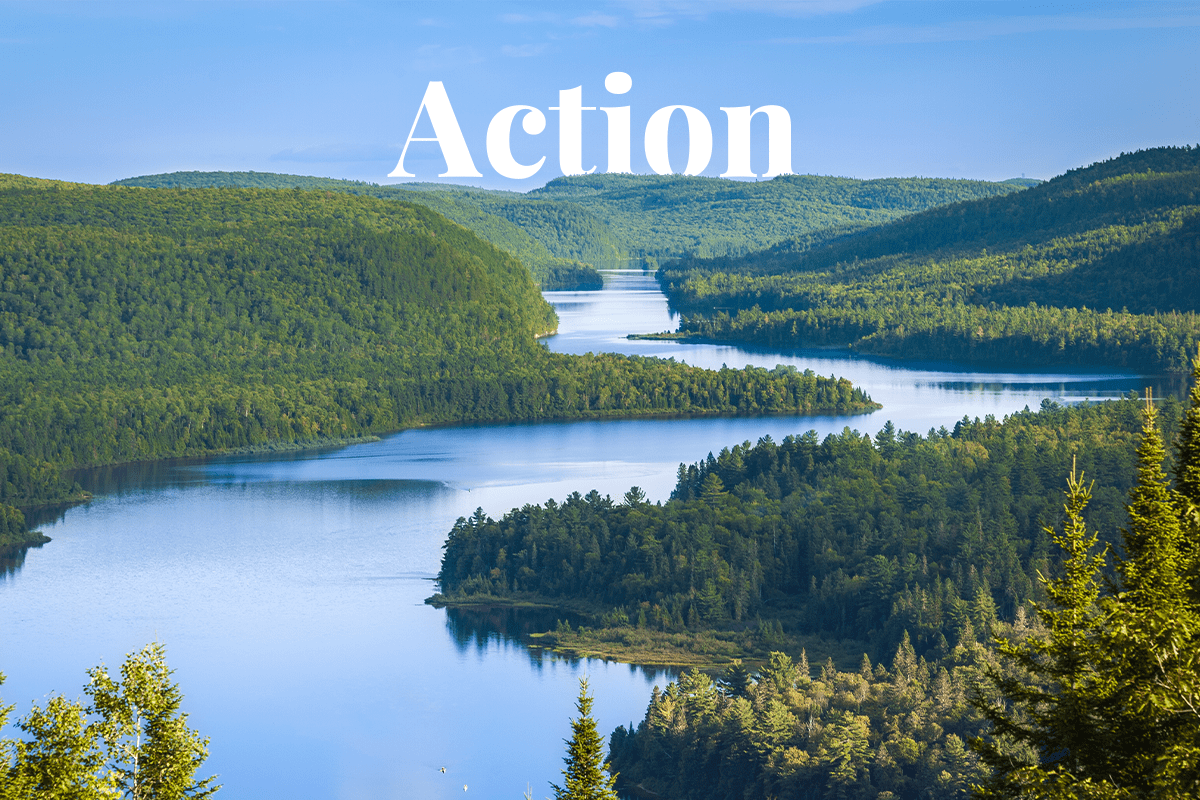 Wapizagonke Lake at sunset viewed from the lookout Le passage, La Mauricie National Park, Quebec, Canada.
Wapizagonke Lake at sunset viewed from the lookout Le passage, La Mauricie National Park, Quebec, Canada.
Deforestation is a leading cause of climatic instability, making it a critical issue that requires urgent attention. As a responsible global citizen, Canada has taken steps towards sustainable forest management and conservation. Currently, the deforestation rate in Canada is at 0.02%, making the country a global leader in the fight against deforestation. Sustained action is however needed to preserve natural resources for future generations. This article will explore the causes of deforestation in Canada, the laws in place to combat it, and the efforts made by the country to fight environmental challenges.
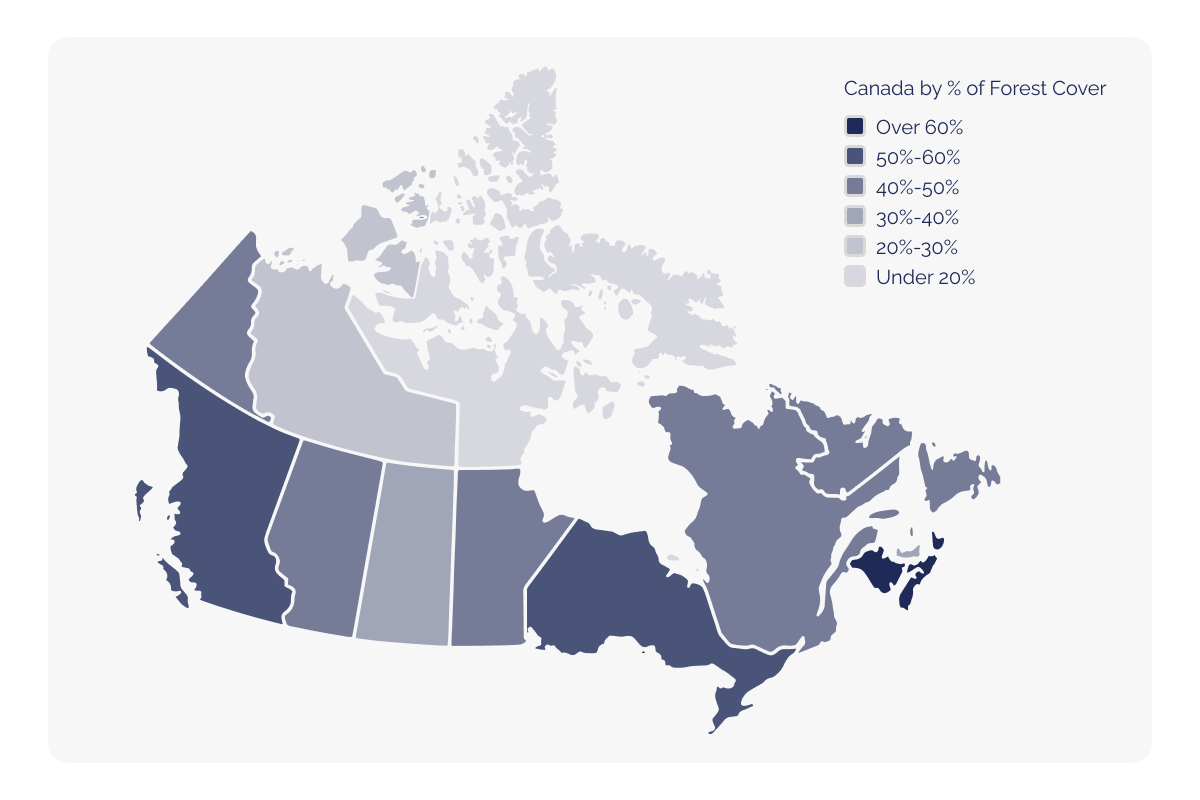 Forest cover percentage of Canadian provinces and territories; Source: https://en.wikipedia.org/wiki/Forests_of_Canada#/media/File:Canada_by_percent_of_Forest_Cover.png
Forest cover percentage of Canadian provinces and territories; Source: https://en.wikipedia.org/wiki/Forests_of_Canada#/media/File:Canada_by_percent_of_Forest_Cover.png
What is deforestation?
Deforestation is the cutting down or clearing of a forest, typically to make land available for other uses, such as agriculture, logging, or urbanisation. It is often viewed as one of the most significant environmental problems today due to its negative impact on the planet's biodiversity, soil, and water cycle. Deforestation also impairs the ability of forests to absorb carbon dioxide and reduce the greenhouse gas effect.
Read more: Top 10 causes of deforestation
The causes of deforestation in Canada
Deforestation significantly contributes to the degradation of the world's natural resources. Canada has been affected by deforestation for many decades, and various factors contribute to forest destruction. Between 2001 and 2021, Canada experienced a loss of 46.6 million hectares of tree cover, resulting in an 11% decline in tree cover since 2000. British Columbia has been the leading state of tree cover loss.
The most prominent causes of deforestation in Canada are logging, the conversion of forest land for agriculture, natural disturbances such as wildfires, and the expansion of the logging and forestry industry. Let’s review these in more detail:
- Logging is the most significant contributor to deforestation in Canada, especially clearcut logging. The logging industry accounts for the vast majority of deforestation in the country, with millions of hectares of forest being cut down every year. This industry is driven by the demand for wood products and pulpwood, leading to the creation of extensive networks of logging roads that further contribute to deforestation.
- The conversion of forest land for agriculture is particularly damaging to primary forests, which are among the most important ecosystems in the world and home to various plant and animal species. From 1990 to 2015, 42% of Canada's deforestation was caused by converting forest land for agricultural uses, including livestock and crop farming.
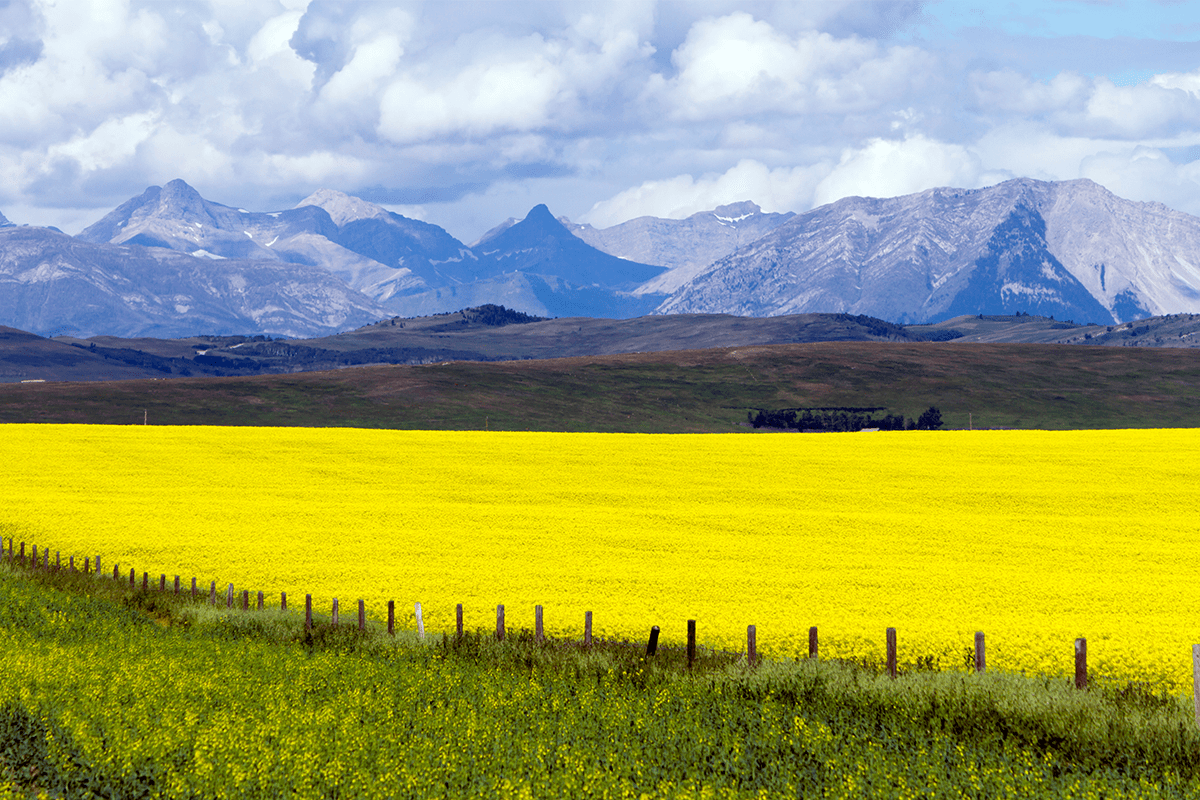 View of yellow canola field in bloom with the Canadian Rockies in the background, Alberta, Canada.
View of yellow canola field in bloom with the Canadian Rockies in the background, Alberta, Canada.
- Natural disturbances such as wildfires also contribute to deforestation in Canada. Wildfires are a natural occurrence. In recent years, there has been an increase in their frequency and severity. As a result, many forests throughout the country have been destroyed, leading to significant losses in biodiversity and the destruction of local ecosystems.
Read more: Deforestation in the Amazon Rainforest: causes, effects, solutions
Other threats and pressures on Canada's forests include climatic instability, insect infestations, and unsustainable forestry practices. These threats, coupled with the impact of human activities, are leading to forest fragmentation, degradation, and biodiversity loss. As a result, Canada's forest quality is declining, affecting the health and resilience of its forest ecosystems.
The impact of deforestation
Deforestation has a devastating impact on the environment and society. When forests are cleared for agriculture or logging, it leads to a loss of habitat for wildlife and disrupts the ecosystem. Forests are essential in regulating the Earth's climate by absorbing large amounts of carbon dioxide and releasing oxygen. The loss of forests also means less carbon dioxide is removed from the atmosphere, leading to increased carbon dioxide emissions and contributing to the climate crisis.
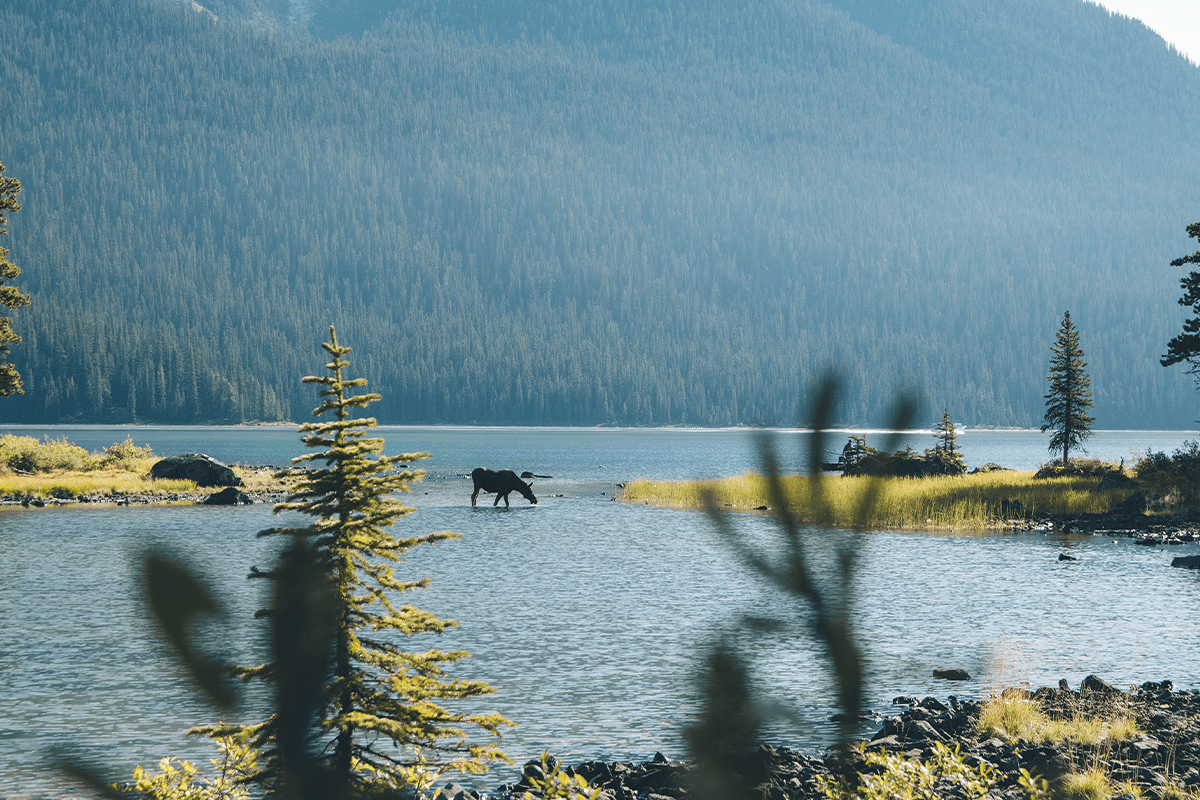 Wild moose is drinking water from beautiful clean Lake Maligne in Alberta, Canada.
Wild moose is drinking water from beautiful clean Lake Maligne in Alberta, Canada.
Forest fires are one of the most common causes of deforestation. When forests burn, they release huge amounts of carbon dioxide into the atmosphere, worsening the carbon footprint and adding to air pollution. Furthermore, forest fires destroy wildlife habitats and vital ecosystems, leading to severe ecological consequences.
Read more: Deforestation in the United States: causes, consequences, and cures
The economic consequences of deforestation are severe as well. The loss of forest affects local communities by removing a source of revenue, particularly in areas dependent on the forestry industry. Moreover, deforestation leads to job losses as the sustainability of the forestry industry is threatened due to damaged forest ecosystems.
Canadian forests
Canada is home to some of the world’s largest and most biodiverse forests and has the third-largest forest area in the world. Canada's forested land area is estimated to be around 362 million hectares—almost 35% of the country's total land area—with more than 90% of the country's forests being publicly owned. Canadian forests are vital in supporting a wide range of ecological and economic functions, such as providing clean air, water, and biodiversity, and being a primary contributor to the economy through industries such as logging, forestry, pulp, and paper. However, deforestation poses a significant threat to these valuable ecosystems, impacting wildlife habitats and local communities and contributing to the global climate crisis.
The primary forests in Canada
Primary forests (also known as natural or intact forests) in Canada refer to mature and untouched forests that have been allowed to develop naturally without human interference. These forests are significant in their biodiversity, carbon storage capacity, and cultural value. They serve as habitats for many plant and animal species, play a crucial role in regulating the climate and water cycles, and are a vital resource for indigenous communities relying on them for their livelihoods and cultural practices.
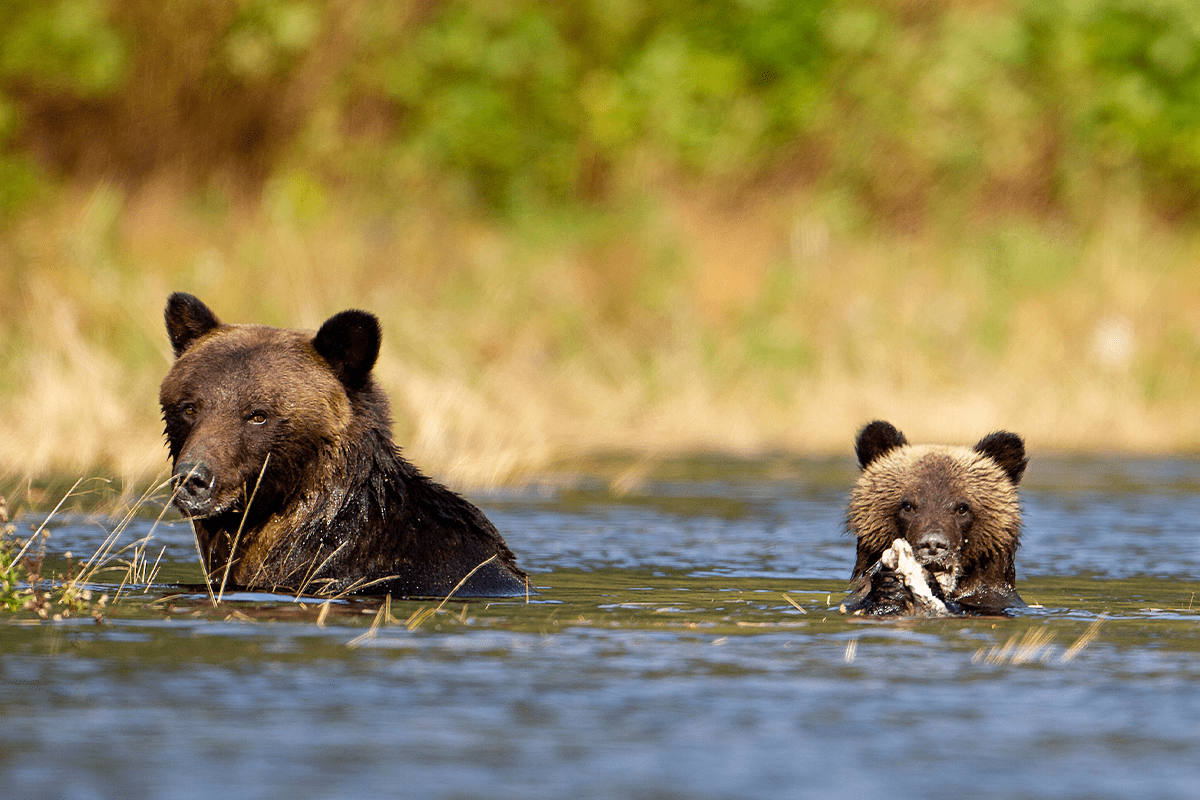 Grizzlies fishing in the Great Bear Rainforest, Canada.
Grizzlies fishing in the Great Bear Rainforest, Canada.
Canada's forests can be classified into three broad categories: boreal forests, temperate forests, and coastal forests. Canada’s boreal forest, which covers much of the country's northern region and is dominated by coniferous trees such as spruce, pine, and fir, is the largest primary forest in the world and is home to species such as caribou, wolves, and lynx. The temperate rainforest on the Pacific Coast is characterised by dense forests of deciduous and coniferous trees such as maple, oak, and pine such as Douglas fir and western hemlock. Coastal rainforests, found on the western coast in British Columbia, are dominated by towering trees such as the Sitka spruce, hemlock, Douglas fir, and western red cedar.
Read more: 10 Vital ecosystem services: sustaining life on Earth
The distribution of forest types varies across Canada's provinces. Boreal forests constitute nearly 80% of Quebec's forested area, while in British Columbia, the coastal forests are dominant. In Ontario, the boreal and mixed wood forests occupy a considerable portion of the province's land area.
The boreal forest in Canada
Canada’s boreal forest is a vast expanse of primary forest that extends across the northern regions of the country. It is the largest forested ecosystem in the world and covers approximately 3.5 million square kilometres—larger than the size of India. The forest is a complex ecosystem that includes a diversity of habitats such as wetlands, lakes, and rivers, and is home to a wide range of wildlife species.
Read more: What are boreal forests?
The boreal forest is dominated by coniferous trees such as spruce, fir, and pine, and its understory consists of shrubs, mosses, lichens, and wildflowers. The dominant species within the boreal forest play a significant role in sustaining and regulating the local climate. The dense forest canopy provides shade, reduces the temperature, and maintains the moisture content of the soil, thus supporting the growth of other plants and wildlife. Additionally, the forest is critical in carbon sequestration, acting as a huge carbon sink. The forest is also home to a variety of wildlife, such as moose, brown bears, wolves, and lynx, as well as countless bird species, including the iconic loon.
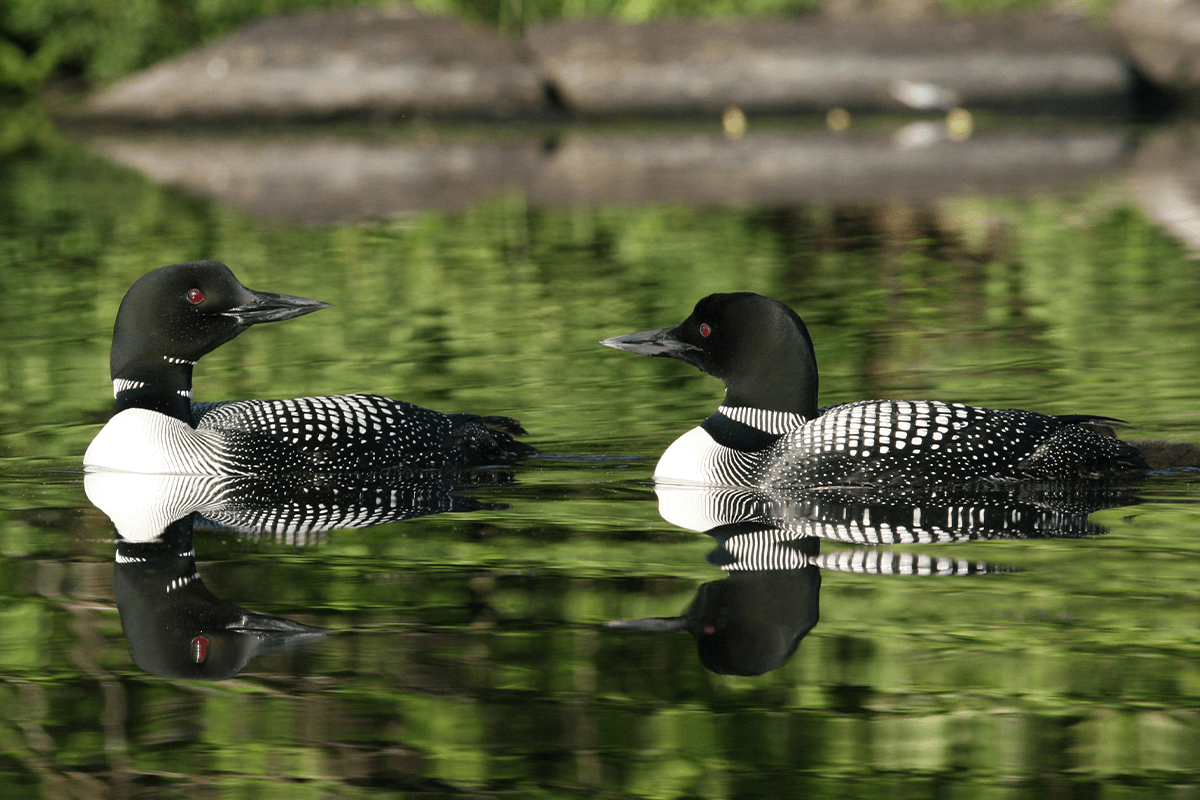 Pair of Common Loons (Gavia immer) in a lake, Ontario, Canada.
Pair of Common Loons (Gavia immer) in a lake, Ontario, Canada.
The logging industry's impact on Canadian forests
The logging industry is a major player in the Canadian economy. But, it has a significant impact on the country's forests, environment, and communities. The methods used by the forestry sector to extract wood from the forest, such as clearcut logging, have both environmental and social impacts.
Clearcut logging is a way of harvesting trees where all the trees in an area are removed. This method can be efficient but can also negatively affect the environment. It can lead to soil erosion, habitat loss, a decline in plant and animal species, and more water runoff. This harms the forest and wildlife that depend on it. It can also harm the soil quality, making it harder for trees to grow in the future.
Clearcut logging can also impact Indigenous communities who rely on the forest for their cultural practices, livelihoods, and connection to the land. It can lead to the loss of traditional lands, threats to cultural heritage, and poor environmental health. Additionally, logging can displace local people, making it harder for them to access basic needs like clean water and healthcare.
Read more: How forest carbon credits are changing the wood market
To mitigate the negative impacts of the logging industry on the environment and local social systems, several regulations and policies have been put in place. The Canadian Forest Service oversees forest management policies and regulations across the country, ensuring that the industry operates within set standards that promote sustainability. In addition, the federal government has implemented the Canadian Boreal Forest Agreement, which aims to conserve and sustainably manage the country's primary forests. These policies and regulations promote sustainable forestry practices and ensure that the impact of logging on the environment and local communities is minimised.
Measure your environmental impact
The deforestation rate in Canada
Canada’s primary forests are vital for biodiversity, carbon storage, climate regulation, and other essential services. Unfortunately, Canada's primary forests are facing significant degradation and loss.
A study shows that almost 5% of Canada's primary forest landscapes were degraded or fragmented between 2000 and 2013. In 2020, about 22.000 hectares of forest were lost due to agricultural operations. However, according to Canada's National Deforestation Monitoring System, the forest area is stable, with less than 0.5% deforested since 1990.
Clearcut logging, in particular, is a significant contributor to forest and land degradation in Canada. This practice involves cutting down all trees in a specific area, often leaving landscapes barren and unable to support wildlife. Urbanisation and the accompanying infrastructure development have also contributed to the loss of primary forests. As roads are built and cities expand, the natural habitat is destroyed, leading to fragmentation and loss of biodiversity.
Read more: Why should endangered species be protected?
Canada is paving the way for successful forest conservation efforts. Indigenous-led protected areas, like the Edéhzhíe World Heritage Site in the Northwest Territories, enforce conservation laws protecting primary forest landscapes. Canada's federal government has also made efforts to combat deforestation by developing sustainable forest management policies and initiatives. These efforts have resulted in the expansion of protected forest areas and reduced the deforestation rate.
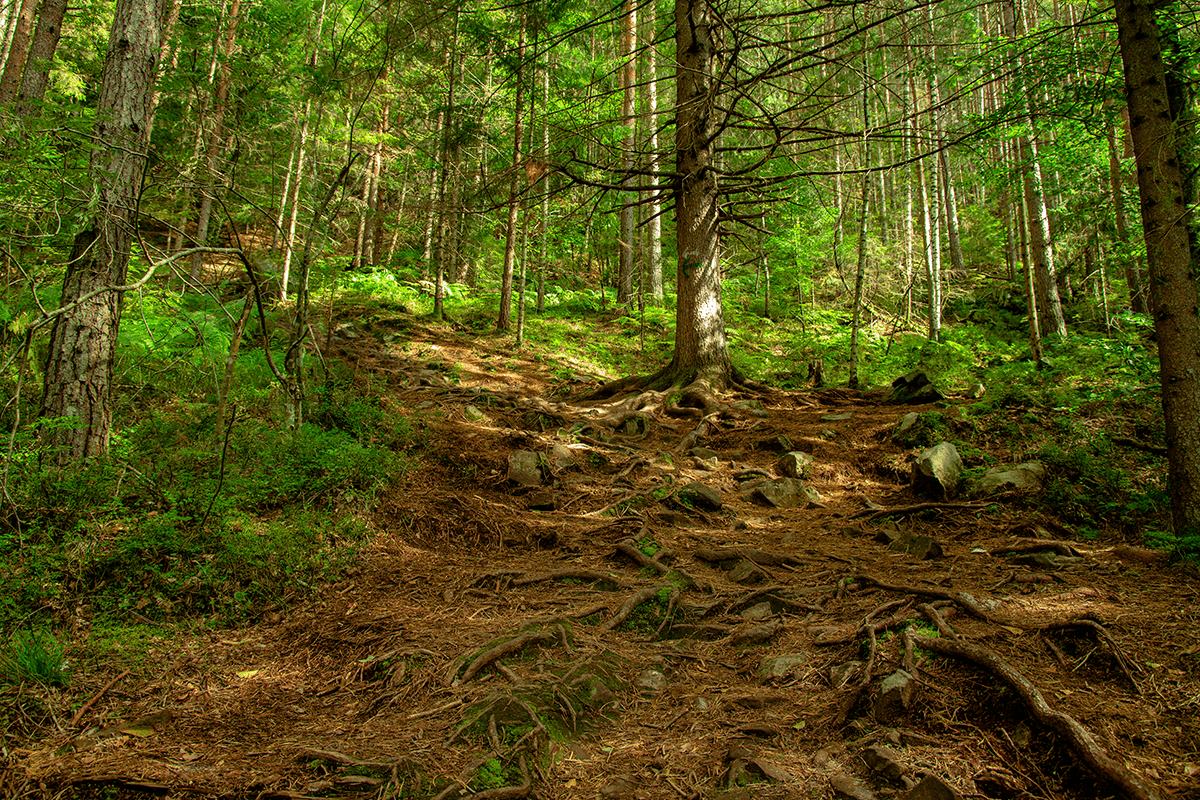 View of the Great Bear Rainforest, Canada.
View of the Great Bear Rainforest, Canada.
Federal and provincial government's role in forestry management
Forestry is important in Canada, as it provides both economic and environmental benefits. The government works with provinces, Indigenous peoples, and others to manage and regulate forestry activities. The government has laws in place to protect the environment, including the Canadian Environmental Protection Act, the Canadian Environmental Assessment Act, and the Species at Risk Act. These laws ensure that forestry activities follow regulations and guidelines to protect the environment and biodiversity.
The government has programmes to support sustainable forest management, including forest research, fire management, endangered species conservation, and the Forest Carbon Initiative to reduce greenhouse gas emissions. Canada aims to plant two billion trees by 2030 and achieve net-zero emissions by 2050. The government is proposing new regulations to address deforestation related to products linked to illegal logging from tropical rainforests.
The management of Canada's forests is split between the federal and provincial governments. Each province has its own approach to forest management, taking into account its specific forestry practices, environmental concerns, and community engagement.
For example, in British Columbia, the government has regulations to ensure sustainable forest management practices and works with First Nations communities to develop co-management strategies. In Alberta, the government balances economic benefits with environmental protection and promotes sustainable forest management practices. In Quebec, the government promotes responsible harvesting of forest resources and collaborates with Indigenous communities on co-management plans. In Ontario, regulations are in place to protect wildlife and water quality, and programmes promote forest regeneration and biodiversity. In Atlantic Canada, the provincial governments work together to manage the Acadian Forest and prioritise protecting endangered species and conserving biodiversity.
Read more: What is sustainable land management?
Solutions to deforestation in Canada
Deforestation in Canada can be mitigated through a range of strategies that aim to promote sustainable and responsible forestry management. These strategies include:
- Adopting sustainable forestry practices that prioritise the long-term health and productivity of forest ecosystems. This includes selectively harvesting trees, replanting and restoring degraded areas, and ensuring sufficient wildlife habitat is preserved.
- Reducing or eliminating clearcut logging, a method that involves removing entire forests in one go, leads to significant ecosystem disruption. Alternative approaches include selective logging, where only mature trees are harvested, or shelterwood logging, where younger trees remain in place to provide habitat for wildlife and promote forest regeneration.
- Protecting primary and intact forests, as these ecosystems have remained largely undisturbed by human activities. These areas are essential for maintaining biodiversity and storing carbon, making them vital to the fight against climate change and biodiversity loss.
- Implementing stricter deforestation regulations, including setting limits on how much forest can be harvested, the methods used, and ensuring that companies compensate for any damage caused. Governments can also provide incentives to companies that prioritise sustainable forestry practices and levy fines and penalties for breaches of deforestation regulations.
- Encouraging the use of recycled and alternative materials can also reduce the demand for newly harvested timber and promote responsible forestry management. This includes using recycled paper products, alternative building materials such as bamboo or recycled plastic, and supporting the development of sustainable production methods.
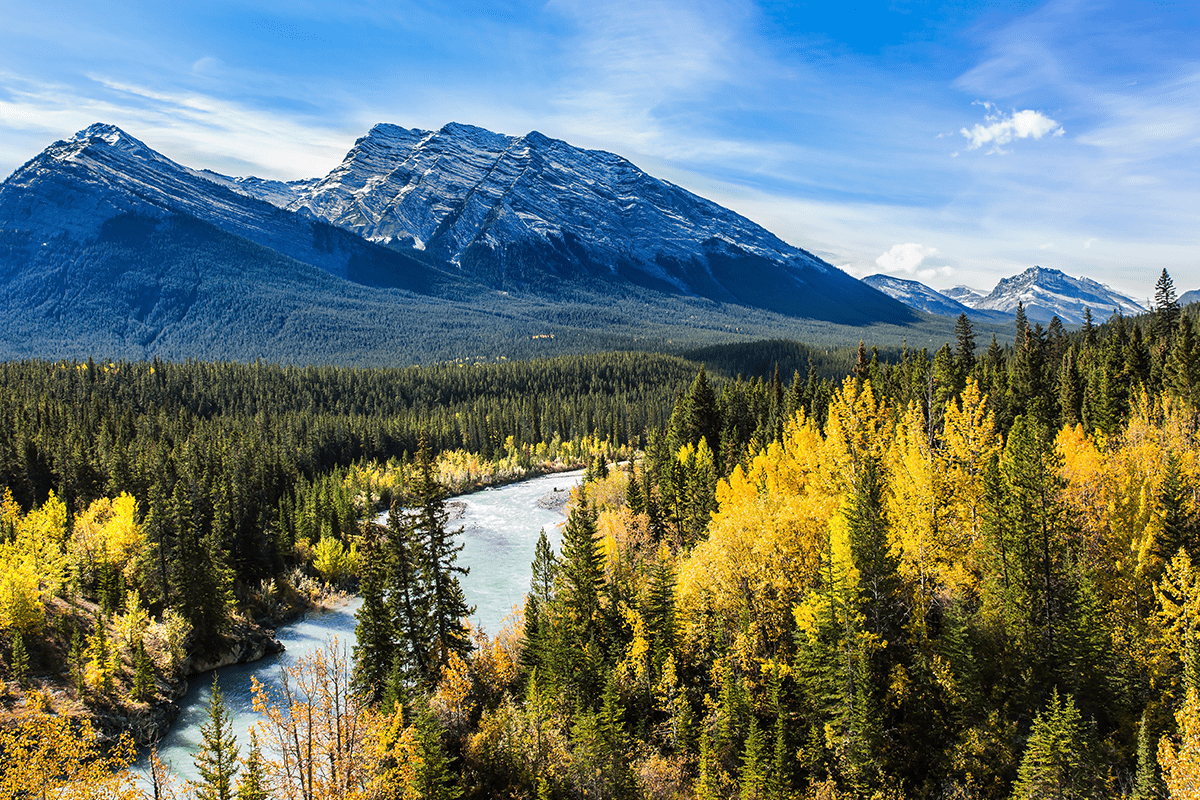 The Abraham lake in the mountain valley of the Rockies of Canada.
The Abraham lake in the mountain valley of the Rockies of Canada.
Canada is setting a global example when it comes to combating deforestation. Using cutting-edge monitoring technology, adopting sustainable forestry practices, and implementing effective laws and regulations, Canada employs all the tools available in the box to prevent deforestation. The 2022 Annual Report, The State of Canada’s Forests, sheds light on the diversity of efforts made towards forest conservation, from wildfire management to invasive species. And most importantly, the report shows it’s possible to support forests to thrive.
Start planting trees today
DGB Group's commitment to forests globally
DGB Group is firmly committed to combatting deforestation and protecting forests worldwide. We recognise the crucial role of forests as essential natural resources that support biodiversity, capture carbon, and provide livelihoods for millions of people worldwide.
Protecting nature is vital for all living beings on Earth, and DGB is dedicated to this cause. We work with farmers, landowners, governments, and conservation organisations to create thriving ecosystems that promote biodiversity and conservation. DGB develops and manages reforestation and afforestation projects on a large scale to promote biodiversity, restore degraded land, and support sustainable development, including the provision of energy-efficient cookstoves. Our solutions offer the opportunity to support nature in a transparent and accessible manner.
DGB’s large-scale nature projects adhere to strict industry guidelines. Our services assist companies and investors in accessing the expanding global nature market through nature-restoration projects, carbon and biodiversity credits, and green bonds.
Our team of experts ensures real, sustainable outcomes that make a positive impact. Join us in protecting the planet!
Join DGB for a greener tomorrow








